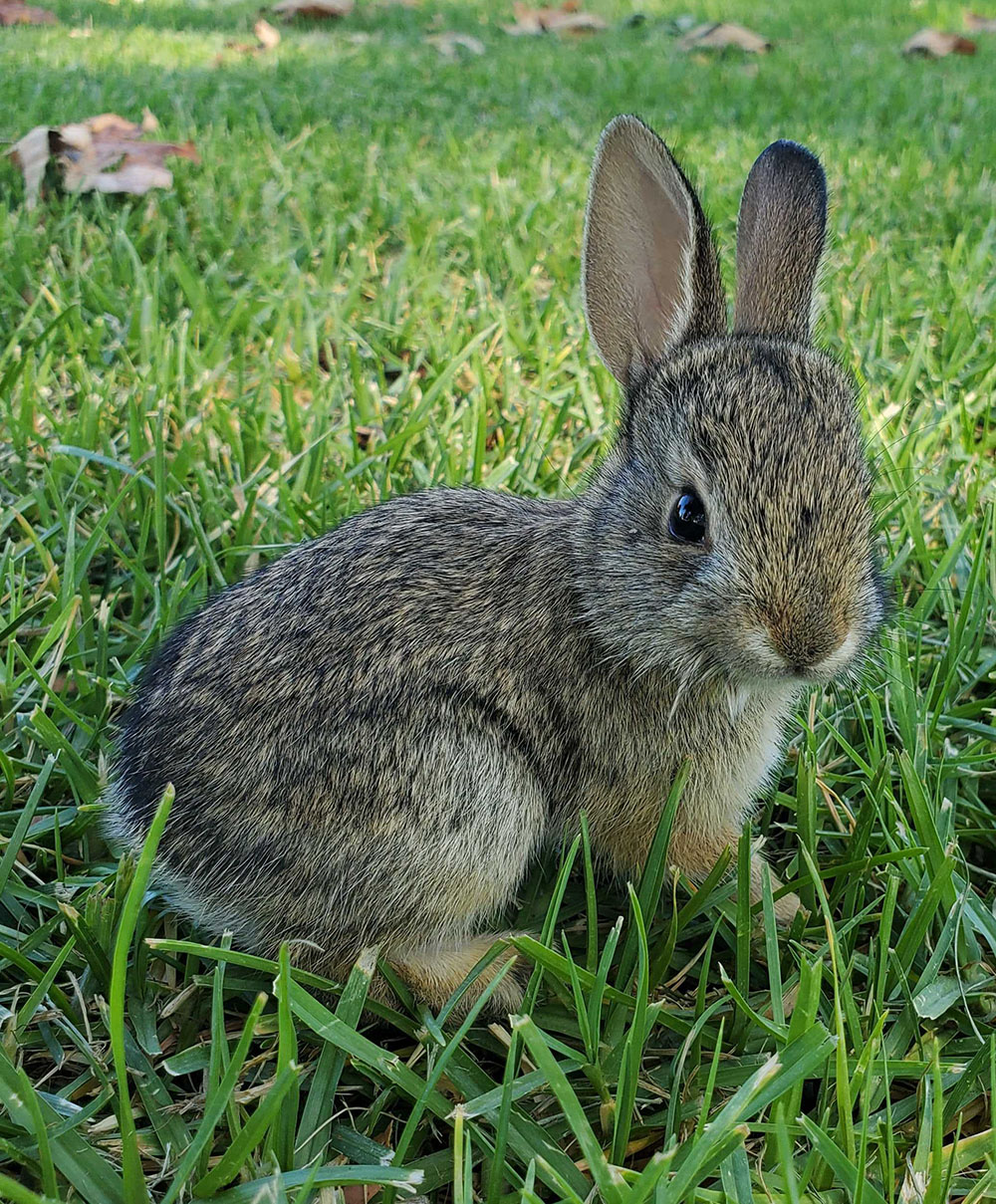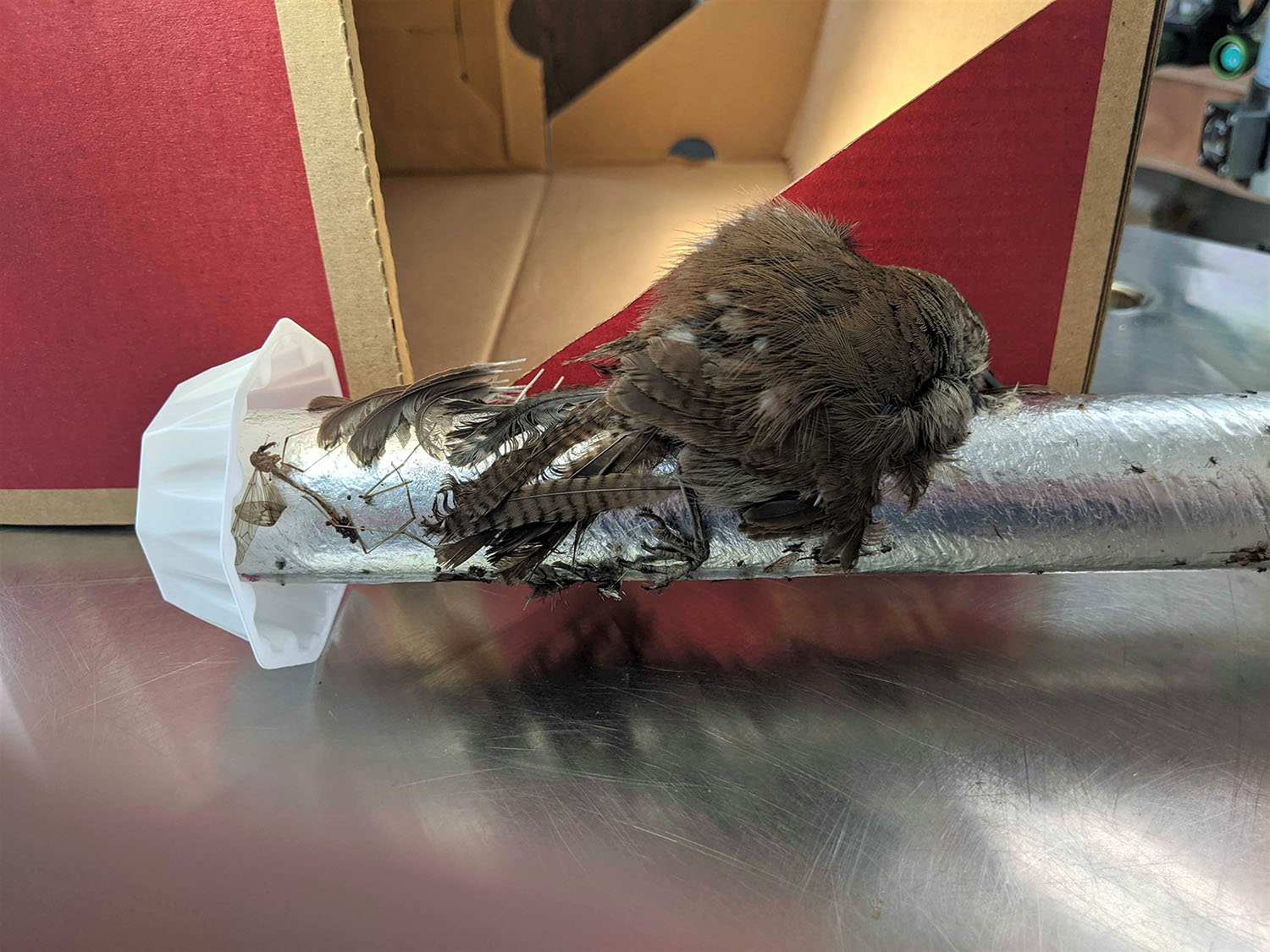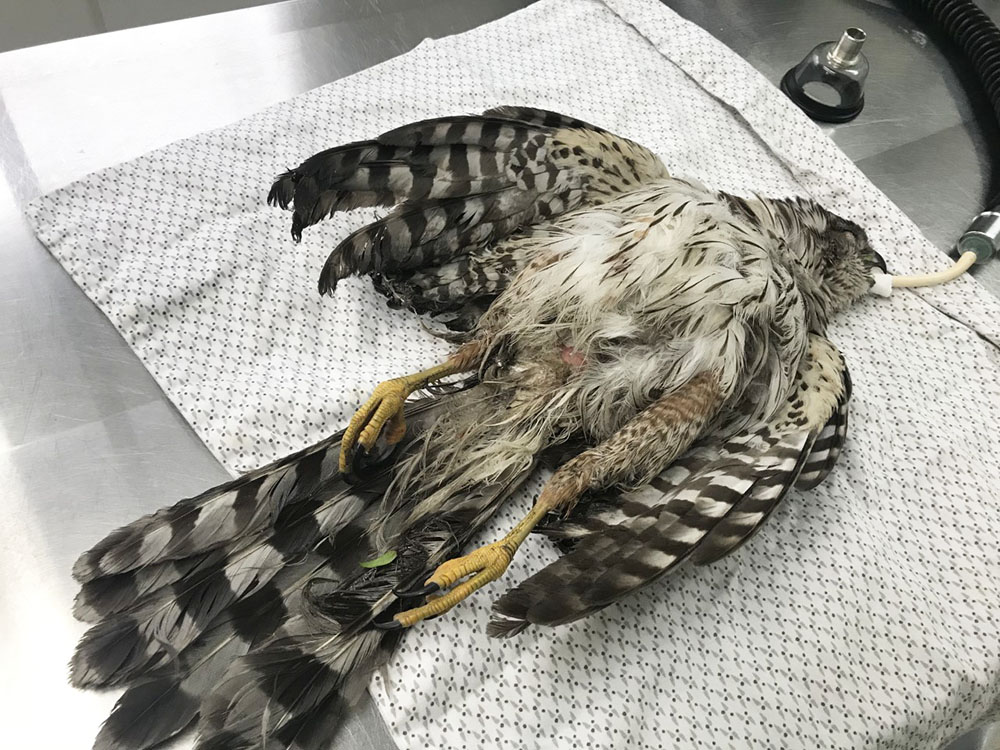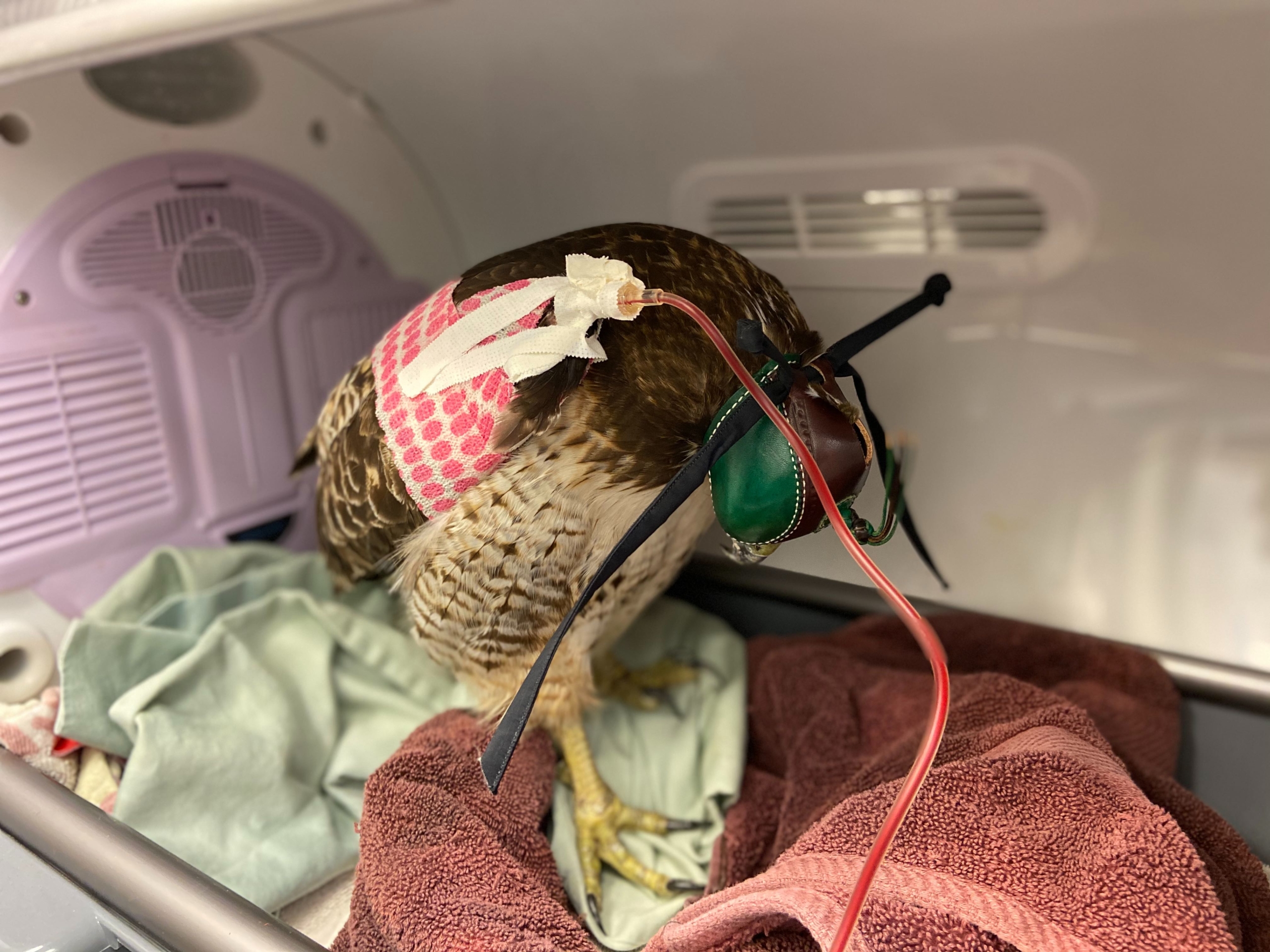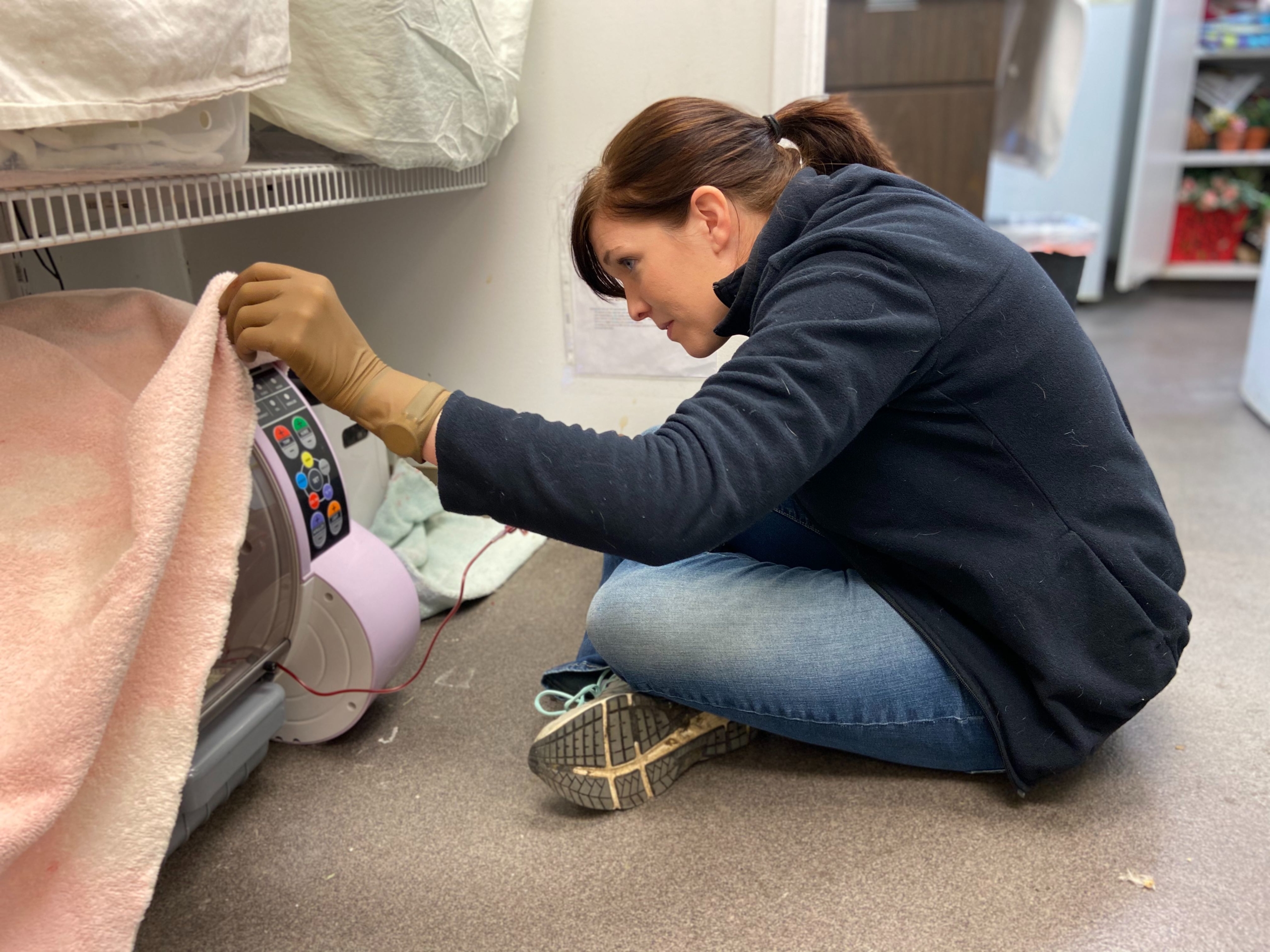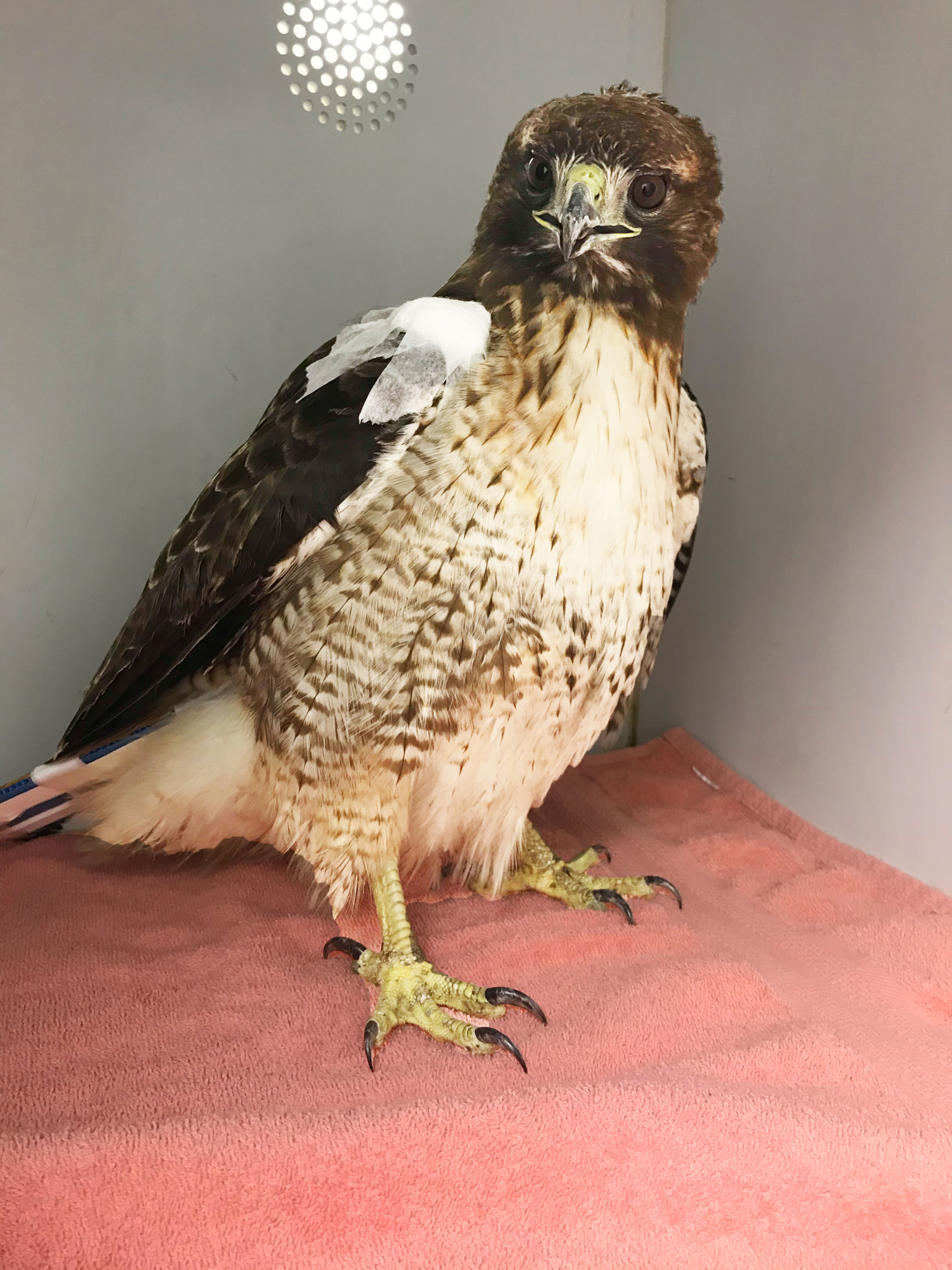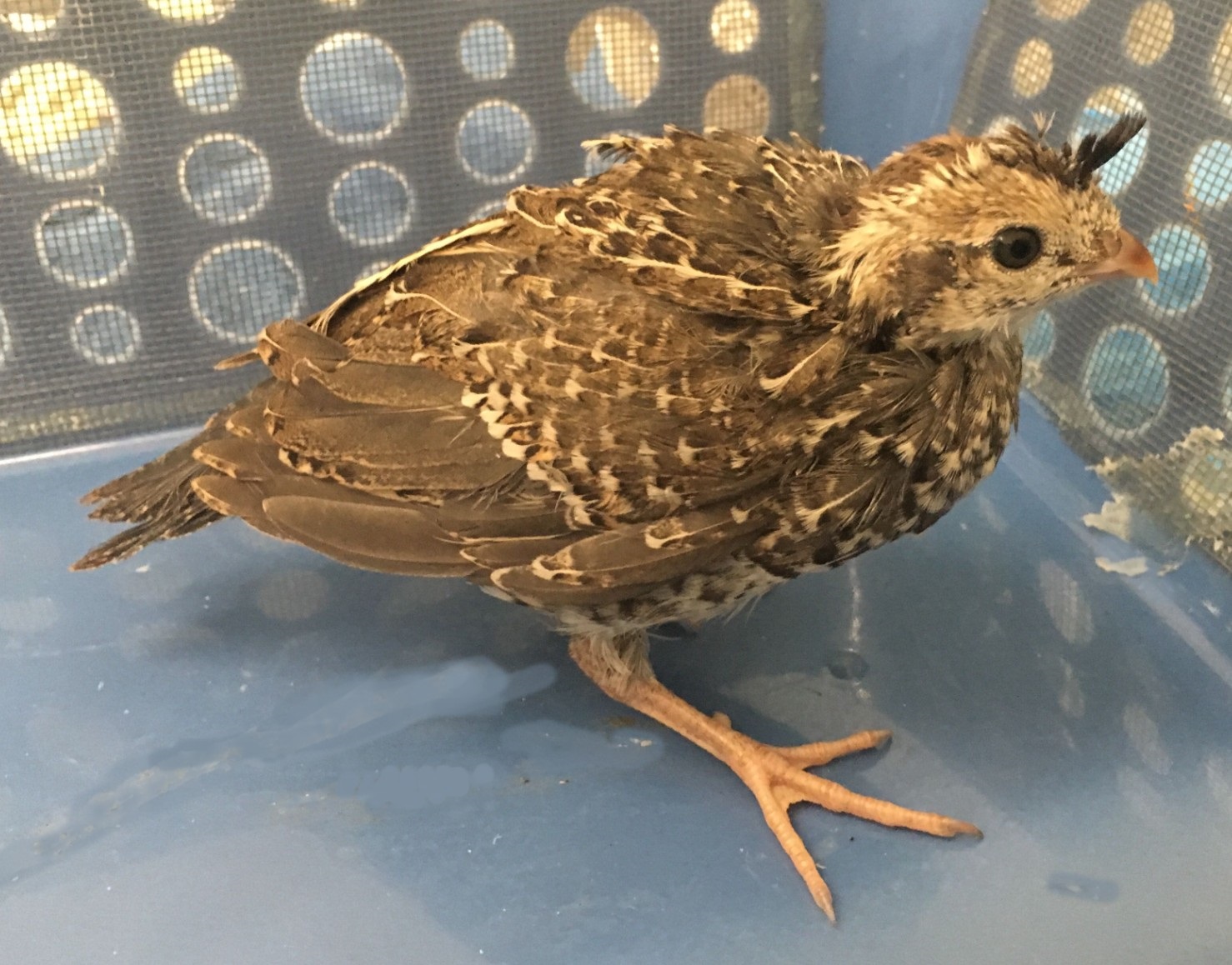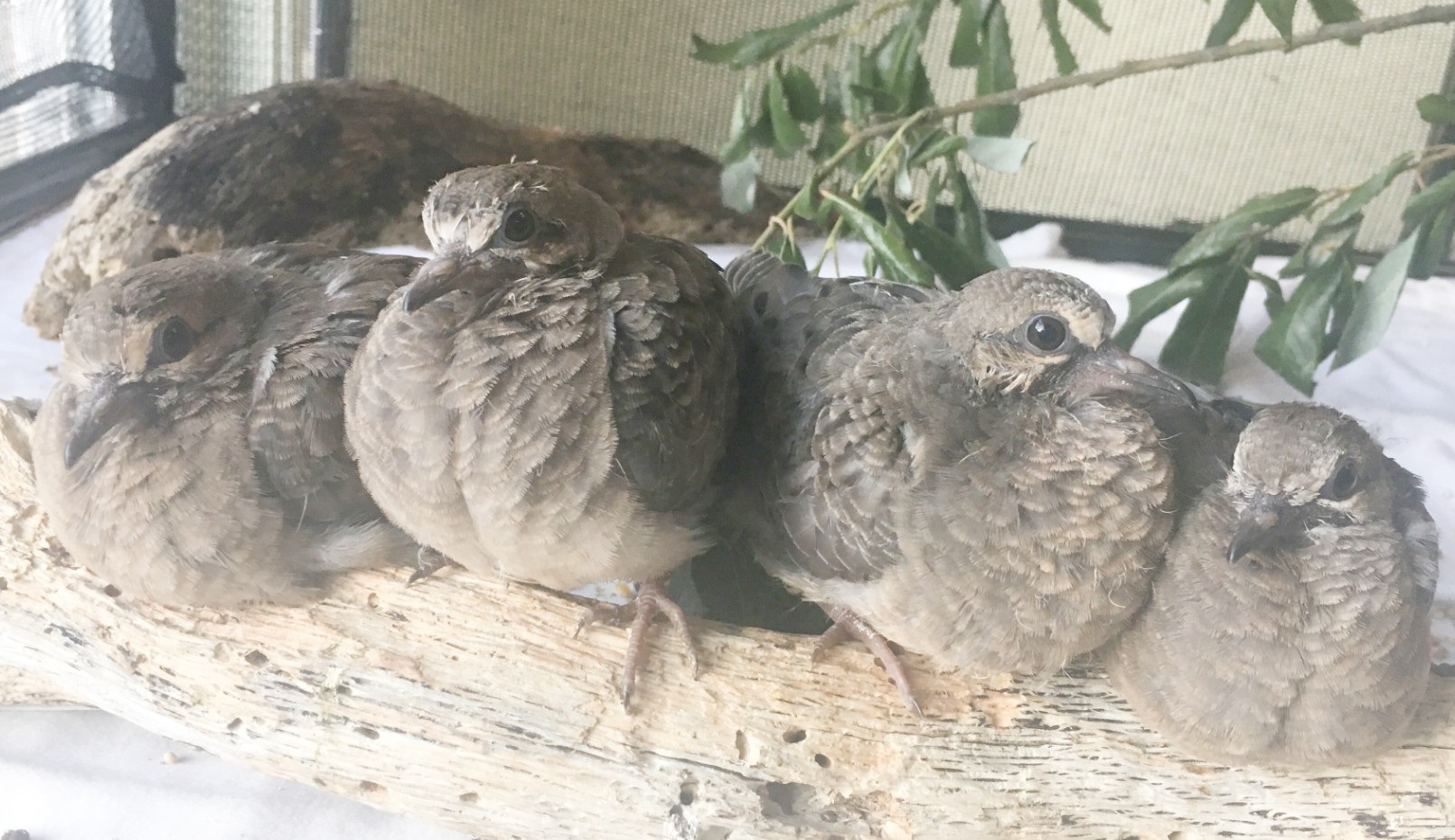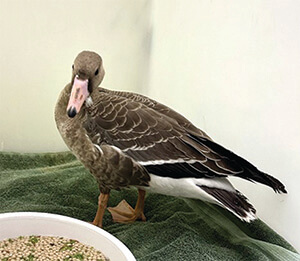
Greater White-fronted Goose
By Dr. Guthrum Purdin, DVM
Avian influenza is a disease that has been infecting birds for over 150 years. The first documentation of the virus dates to 1878 in northern Italy, where it was described as a contagious disease affecting poultry. Historically avian influenza has had minimal impact on wild birds, but the most recent strain of the virus has had a detrimental effect on wildlife across the Americas. The disease is effectively 100% fatal for birds, and it has already caused the death of over 53 million wild and domestic animals in the United States alone.
The current strain of highly pathogenic avian influenza (HPAI) first arrived in North America late in 2021, appearing in eastern Canada. It was likely carried to Newfoundland from Eurasia by migratory waterbirds. Through 2022 it slowly made its way across the continent and the first west coast cases were found in Washington State late April/early May: a pair of Snow Geese and a Bald Eagle. By summer the contagion had reached the San Francisco Bay. Hundreds of wild birds are known to have died in the Bay Area, but fortunately for Southern California the southward advance of the disease was stalled there for the rest of the summer. HPAI does not tolerate hot, dry conditions well and last summer’s heat may have helped protect our local birds.
Although many domestic poultry flocks have been affected, an unusual aspect of this particular H5N1 variant of HPAI is that it particularly affects a wide range of wild birds. Some species can carry it without showing symptoms while others get infected and die quickly. In Washington State, for example, one lake experienced the deaths of hundreds of geese. Even worse, along the coast of Peru, which until now had been free of HPAI, over 22,000 pelicans and other seabirds were lost to the contagion in December. Other animals too can be affected, including harbor seals, bobcats, foxes, even a black bear recently tested positive in the Pacific Northwest.
The staff at the California Wildlife Center had been closely monitoring the inexorable advance of HPAI as it came relentlessly closer to Los Angeles. We learned everything we could from the experiences of other wildlife rehabilitation groups in affected areas of the US, as well as those in Africa and Europe who have been dealing with both this H5N1 strain and multiple other variants of HPAI for many years. Working with hospital staff, as veterinarian I put together a comprehensive set of protocols for how to respond, knowing that HPAI’s arrival in SoCal was inevitable. Of great importance was ensuring that HPAI positive animals not enter the general population of patients. If that happens, there is a high risk of it spreading through a busy wildlife hospital.
Now, when members of the public call about animal’s they’ve found, they’re asked a variety of questions to help identify possible HPAI patients. When they arrive on site, they’re met by volunteers and staff wearing protective gear who bring the new patient to a specially designated screening room separate from the rest of the hospital where they are carefully checked for signs of avian influenza. After initial HPAI screening, patients free of overt clinical signs get a follow-up exam in our ICU to determine what injuries or non-influenza illness led to being rescued and a course of treatment is determined. During this, they are again evaluated for HPAI, since sometimes symptoms that are not immediately obvious can be caught on this second intake exam, especially subtle signs like milky looking eyes or a tendency to act “switched off’, like they’re awake and standing but otherwise totally unresponsive to stimuli. After that they spend a day or two in strict quarantine and then a few days in isolation. HPAI is so virulent, that susceptible species usually present symptoms right away—however, in rare cases they may not show signs until later in care, hence the orderly set of exams and quarantine/isolation housing areas. This way we have a strong sense of a negative HPAI status before new admits are housed around patients already in care. Each area has disinfectant foot baths and appropriate levels of personal protective gear. Special foot coverings are worn when entering and leaving outdoor aviaries and caging to be extra careful, since animals housed outside could potentially be infected by HPAI positive birds flying overhead.
In September, the inevitable happened, and CWC got its first positive HPAI patient, a Canada Goose with the severe neurological and visual deficits that are classic for HPAI birds. The disease was identified during physical exam and this goose was humanely euthanized to alleviate their suffering. The diagnosis of HPAI H5N1 was definitively confirmed with the assistance of the California Department of Fish and Wildlife’s Wildlife Investigation Lab.
Throughout the greater SoCal area numerous other cases have been identified among migratory birds, especially geese and raptors. So far, the horrifying mortality events seen in Europe, Peru and the Pacific north coast have not occurred here and winter cases have tapered off.
CWC awaits the spring migration with trepidation, as birds already stressed by their far travels may be carrying HPAI back into our area. However, our hospital’s thorough and decisive biosecurity protocols, as well as the keen vigilance of the treatment crew, have served well in protecting the hospital from an onsite outbreak. Another hot, dry summer after the winter rains would, in this case, be an added boon.
What can you do to help prevent the spread of this disease?
- If you handle birds, wash your hands carefully with soap and water.
- Avoid any contact between domestic poultry and wild birds.
- If you have outdoor chickens or other poultry, take down all bird feeders and bird baths.
- In general, bird feeders & bird baths should be cleaned and disinfected at least once a week.
- Keep pet birds indoors and away from other domestic or wild birds.
- If you might be handling sick birds or other wildlife, wear appropriate protection (like masks, gloves, and eye protection).
- Disinfect surfaces that have come in contact with birds or sick wildlife.


